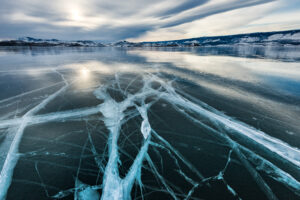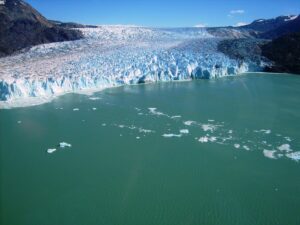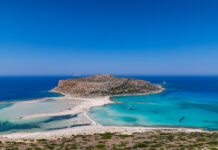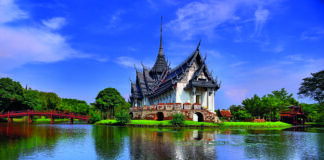- Lake Baikal (Russia): With an astounding maximum depth of 5,387 feet (1,642 meters), Lake Baikal, situated in southern Siberia, holds the title of the deepest lake in the world. It's not just the impressive depth - Lake Baikal is also considered the oldest freshwater lake on Earth, estimated to be around 25 million years old. It contains more freshwater than all the Great Lakes combined. The lake is like an extensive home for many plants and animals. Some of these, including a unique type of seal that lives in freshwater, are only found in this lake and not elsewhere on Earth.

- Lake Tanganyika (Burundi, Democratic Republic of Congo, Tanzania, Zambia): As the second deepest lake in the world, Lake Tanganyika reaches depths of 4,823 feet (1,470 meters). It's also one of the longest freshwater lakes in the world. In the Great Rift Valley, Lake Tanganyika is bordered by four countries. It boasts a remarkable biodiversity, housing over 350 different species of fish. Moreover, it's an invaluable resource for the local populations that rely on it.
- Caspian Sea (Azerbaijan, Iran, Kazakhstan, Russia, Turkmenistan): Though called a sea, the Caspian Sea is the world's largest and third deepest, with a maximum depth of around 3,363 feet (1,025 meters). Five countries enclose it. The Caspian Sea is significant economically due to its abundance of oil and natural gas reserves. Additionally, it has a unique ecology hosting species such as the Caspian seal.
- Lake Vostok (Antarctica): Hidden beneath around 2 miles of Antarctic ice, Lake Vostok is the largest subglacial lake, with depths of about 3,280 feet (1,000 meters). The lake has been isolated for over 15 million years, and researchers believe that it may harbor microbial life that has evolved uniquely in this extreme environment. Studying Lake Vostok is crucial for understanding the possibilities of life on other planets.
- O'Higgins-San Martín Lake (Chile, Argentina): This picturesque lake, known as O'Higgins in Chile and San Martín in Argentina, has a maximum depth of 2,742 feet (836 meters). It's located in the breathtaking region of Patagonia and is surrounded by glaciers and lush forests. The lake's waters are strikingly turquoise, and the O'Higgins Glacier feeds it.

- Lake Malawi (Malawi, Mozambique, Tanzania): Also known as Lake Nyasa, Lake Malawi is 2,316 feet (706 meters) deep. It is particularly famous for its biodiversity, especially the cichlid fish, of which there are approximately 1,000 species within the lake. Furthermore, Lake Malawi National Park is a UNESCO World Heritage site, which aids in preserving this rich aquatic habitat.
- Lake Issyk Kul (Kyrgyzstan): In the Tian Shan mountains, Lake Issyk Kul is an endorheic alpine lake reaching 2,192 feet (668 meters) in depth. It is the second-largest mountain lake in the world. Despite being situated at an altitude of 1,607 meters, it never freezes due to slight salinity. The lake and its surroundings are a natural treasure with hot springs and historical sites.
- Great Slave Lake (Canada): Great Slave Lake, in Canada's Northwest Territories, is the deepest lake in North America at 2,014 feet (614 meters). The lake is famous for having pristine water and is a popular place for fun activities like fishing. The indigenous communities around the lake have a rich cultural heritage.
- Lake Ysyk (China): Also known as Sayram Lake, Lake Ysyk is situated in the Xinjiang region of China and has a maximum depth of 2,000 feet (609 meters). The lake is renowned for its pristine waters and beautiful landscape, making it a popular tourist destination.
- Lake Matano (Indonesia): Lake Matano, located in South Sulawesi, Indonesia, has a maximum depth of 1,940 feet (592 meters). It is one of the ten deepest lakes in the world and is also one of the clearest. The lake is home to various endemic species and is an important site for biodiversity.















